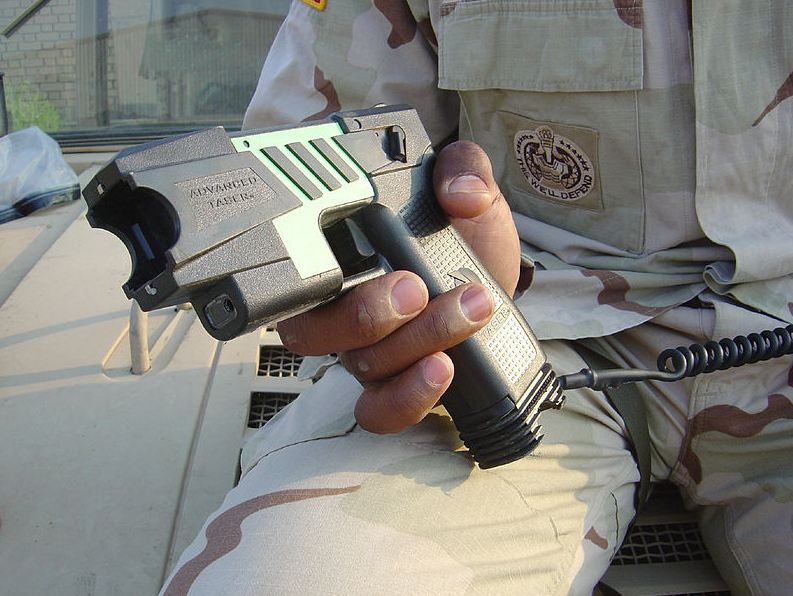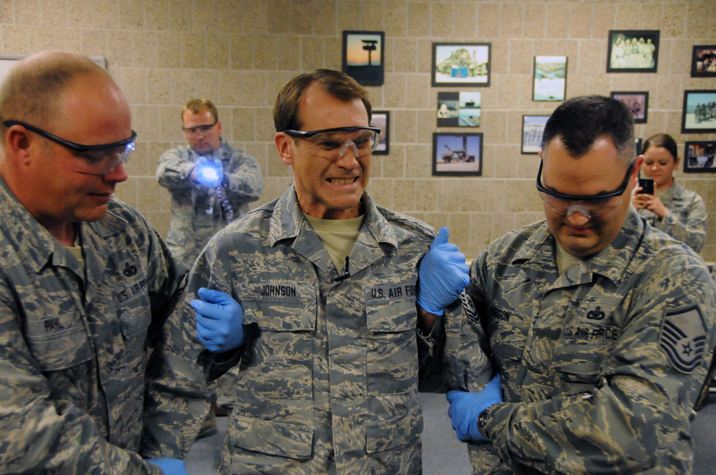The Taser is arguably one of the best non-lethal weapons that almost every policeman around the world has. Instead of using guns or firearms, which can be lethal and result in the death of the person being apprehended, most of the personnel within law enforcement would use Taser, otherwise known as a stun gun, to incapacitate the target. What is a Taser? And how does it work? The answers to these simple questions will be revealed as we get a closer look at the origins and mechanism of the Taser.
History of the Taser
The earliest iteration of the Taser was developed by Jack Cover, a NASA researcher who began experimenting with ways on how to create a non-lethal weapon in 1969. Cover then completed the first prototype in 1974 and named it “TASER.” The name of the weapon is a loose acronym for “Tom Swift and His Electric Rifle,” which was a book written by Victor Appleton, who is actually a fake author created by the Stratemeyer Syndicate, a publishing company owned by American publisher and children’s fiction writer Edward L. Stratemeyer. According to Cover, the hero of the story, Tom Swift, is his childhood hero.
The first mass-produced Taser model that went for sale was called the “TASER Public Defender.” This weapon was classified as a firearm by the Bureau of Alcohol, Tobacco, and Firearms (also known as ATF) in 1976 due to its use of gunpowder as a propellant even though it is non-lethal.
In 1993, businessmen and brothers Rick and Thomas Smith founded the TASER International company with the aim to create safer weapons that could be used by law enforcement. At their facilities in Scottsdale, Arizona, the two brothers collaborated with Jack Cover to develop and design an improved version of the original Taser.
The result of the partnership was the Air TASER Model 3400, a non-lethal weapon released in 1994 that features an AFID (anti-felon identification) system to prevent criminals from using the weapon if it ever gets stolen from the police. In addition, when the Taser is fired, it would release small pieces of paper (which looks like confetti) that contain the serial number of the weapon, which can help in identifying which Taser unit is fired. Because of its use of conductive energy rather than gunpowder as a propeller, the ATF declared that the new Taser model is not a firearm.
By 1999, TASER International had made improvements to the Taser, as they began redesigning the weapon to look more like a handgun for better ergonomics and grip. In addition, the company also added the “patented neuromuscular incapacitation (NMI) technology” that enhances the ability of the weapon to stun or stop the target. On April 5, 2017, TASER International rebranded as a new company called Axon in order to expand its line of products to include software and body cameras.
How does a Taser Work?
The modern Taser device would fire two small needles that serve as the electrodes or electrical conductor utilized to make contact with a nonmetallic object (like a human’s skin). These needles are connected to insulated copper wires that connect the needles with the battery that produces the electric current strong enough to incapacitate a person.
The needles or electrodes are stored inside the cartridge found at the front of the device, and this cartridge also contains a propellant that launches the needles through small compressed nitrogen charges. This cartridge can then be replaced once used.
Once the Taser is fired, the needles can travel at the speed of 55 meters or 180 feet per second. Furthermore, the needles would spread 30 centimeters or 1 foot apart for every 2.1 meters or seven feet. Once they are 10 centimeters or four inches away from each other, the electric current within the Taser would then activate and incapacitate the target. The electric current would deliver “neuromuscular incapacitation” to the person hit by the needles.
Most of the Taser devices issued for police have a maximum range of 10.67 meters or 35 feet. However, if an ordinary citizen wants to purchase a Taser, the highest model that they can purchase has a limited range of 4.57 meters or 15 feet. Even though police-issued Tasers have a longer range, they are advised to be within 15 to 25 feet in order to properly hit the target with the device’s needles.
The reason why the Taser is considered one of the best non-lethal weapons that the police can use is that it is much safer for self-defense compared to a baton or a pepper spray, as the Taser has a much longer range that allows the police to stop an individual before he or she can get close. So, with the help of the Taser, the people in law enforcement can reduce the risk of injuries and casualties for both the police and the criminals.


